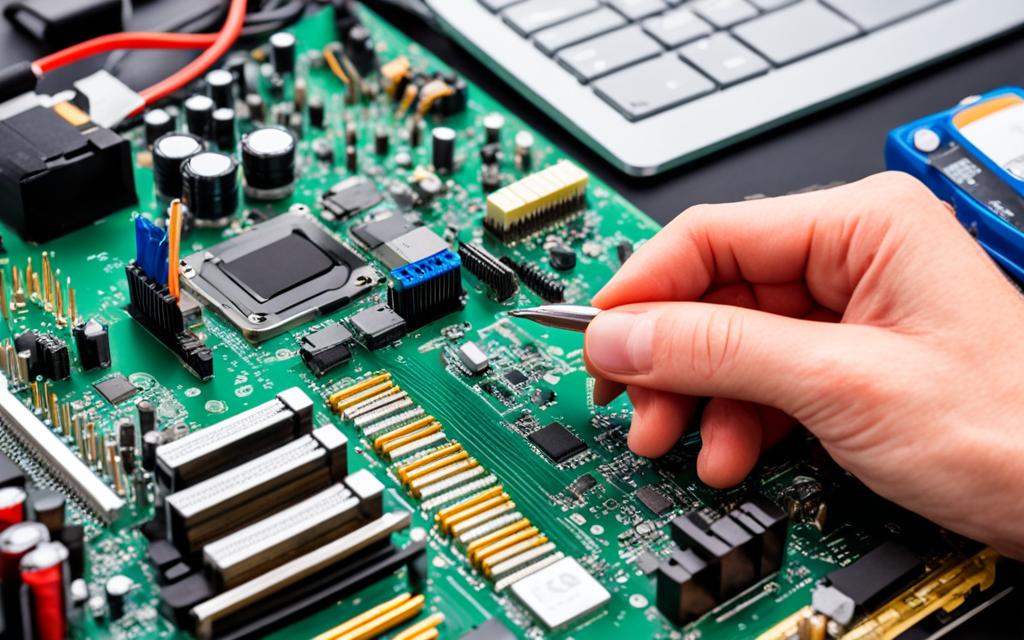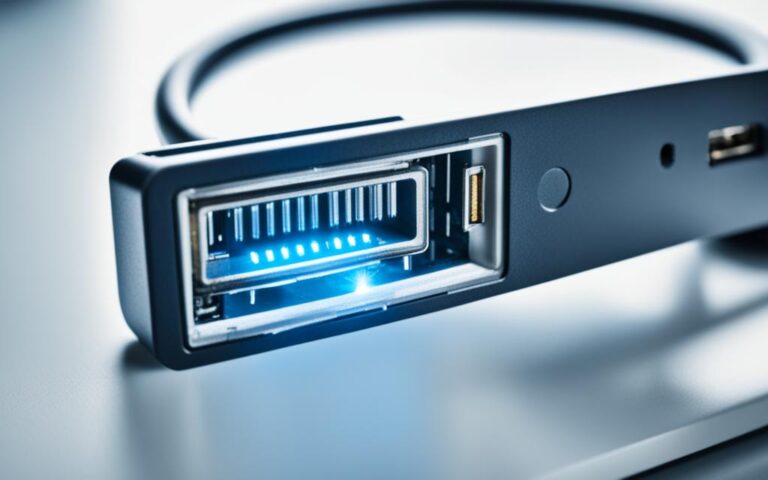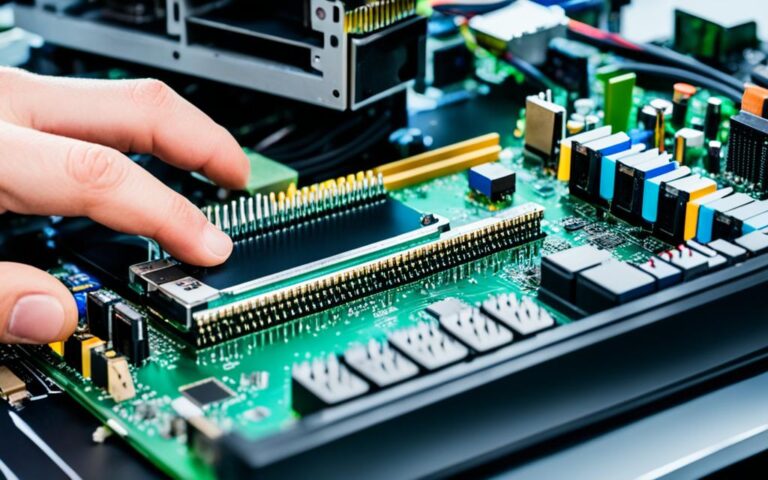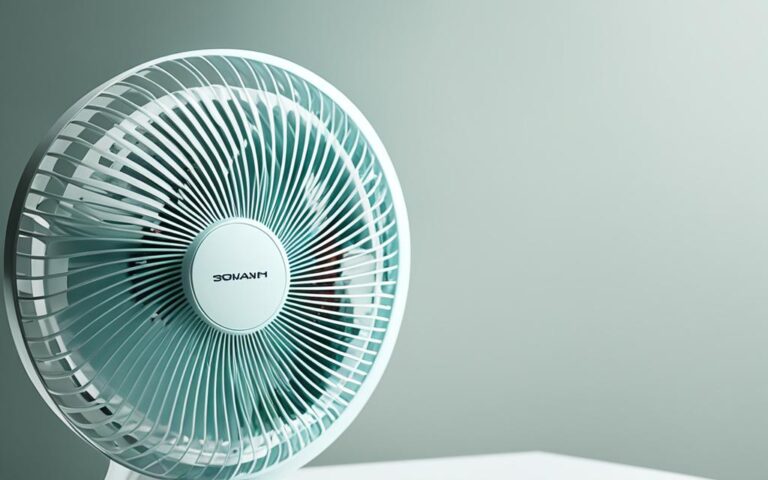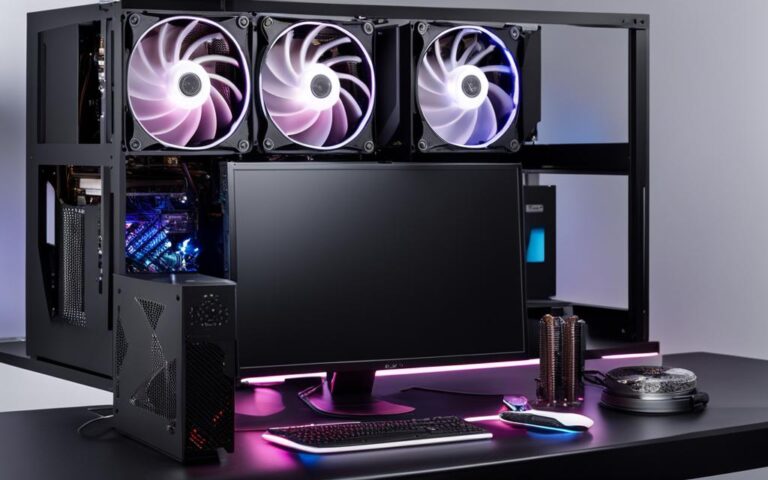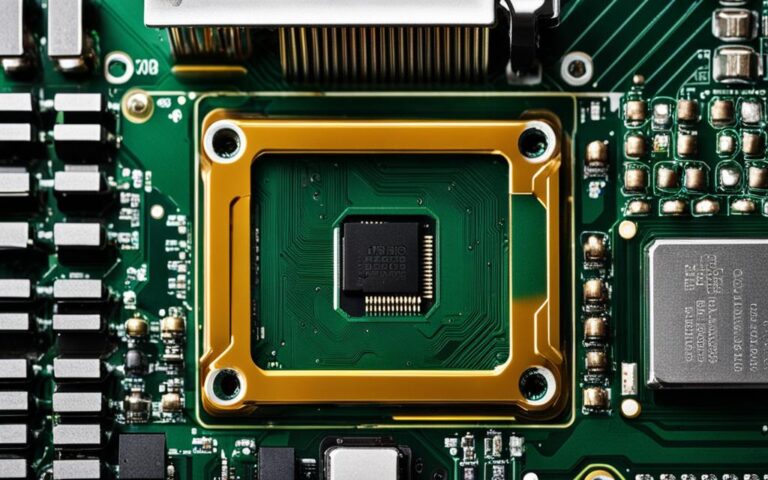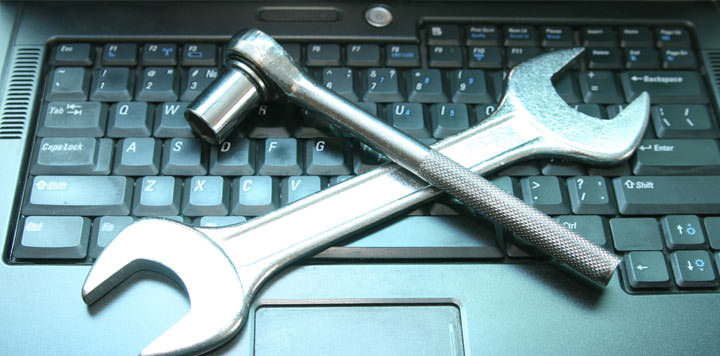Desktop Memory Slot Repair and Maintenance
Random Access Memory (RAM) is a critical component in your computer, affecting its performance and reliability. Over time, RAM can accumulate dust and corrosion, leading to decreased efficiency and potential hardware problems. This article delves into the best ways to clean RAM contacts, ensuring your computer’s memory operates at its peak. Whether you’re a tech enthusiast or a regular user, understanding how to properly maintain and clean your RAM is invaluable for prolonging your computer’s life and performance.
Understanding RAM and Its Role in Your Computer
Random Access Memory (RAM) is a vital component in your computer, serving as the primary memory that your processor uses to run programs. It plays a crucial role in the overall performance and efficiency of your system. RAM acts as a bridge between your computer’s processor and data storage, providing fast and temporary access to the information needed for smooth operation.
When you open a program or perform a task on your computer, it loads into RAM, allowing the processor to quickly retrieve and manipulate the necessary data. The speed and capacity of your RAM directly impact your computer’s ability to multitask, run resource-intensive applications, and handle large files efficiently. In a way, RAM serves as a temporary workspace where your computer performs its operations.
As data is rapidly accessed and processed in RAM, it enables seamless transitions between different tasks and contributes to a smoother user experience. An adequate amount of RAM ensures that your computer can handle multiple processes simultaneously without lag or delays, resulting in improved performance and responsiveness.
Over time, however, the contacts of RAM modules can become dirty or corroded. This accumulation of dust and corrosion can hinder the efficiency and functionality of your RAM, affecting your computer’s overall performance. Regular maintenance and cleaning of RAM contacts are crucial to ensure optimal system performance.
| Benefits of Clean RAM | Impacts of Dirty RAM |
|---|---|
|
|
Identifying When Your RAM Needs Cleaning
If you’ve noticed your computer starting to slow down, experiencing random crashes, or having difficulty starting up, it may be time to clean your RAM. These issues can often arise from dirty or corroded RAM contacts, which hinder the proper communication between the RAM module and the motherboard.
When RAM contacts become dirty or corroded, it can lead to data transmission errors and overall performance degradation. This can result in sluggish system responsiveness, frequent program freezes, and even system crashes. To prevent these issues and keep your computer running smoothly, regular RAM cleaning is essential.
Fortunately, cleaning your RAM contacts is a relatively simple process that can make a significant difference in your computer’s performance. By removing dust, debris, and corrosion from the contacts, you can restore optimal functionality and improve overall system stability.
If you’re unsure whether your computer is experiencing RAM-related issues, there are a few signs that can help you identify the need for RAM cleaning:
- Computer slowdown and sluggish performance: If you’ve noticed a significant decrease in your computer’s speed and responsiveness, RAM cleaning may help resolve these performance issues. Cleaning the contacts can enhance the data transfer speed between the RAM and the motherboard, allowing for faster program execution and smoother multitasking.
- Random crashes and system instability: If your computer frequently crashes or experiences sudden reboots, it could be a result of dirty or corroded RAM contacts. Cleaning the contacts can help eliminate communication errors and stabilize your system, reducing the occurrence of random crashes.
- Startup issues and prolonged boot times: If your computer takes an unusually long time to boot up or frequently encounters errors during startup, RAM cleaning may be necessary. Dirty contacts can disrupt the initialization process and cause delays or errors during system booting.
Regularly cleaning your RAM contacts not only helps address these issues but also prolongs the lifespan of your RAM modules. By maintaining clear and reliable connections, you can ensure optimal performance and prevent hardware problems down the line.
To learn how to clean your RAM properly, continue reading the upcoming section on “The Art of RAM Removal: Safely Extracting Memory Sticks.”
Quote:
“Cleaning your RAM contacts is like giving your computer a breath of fresh air. It helps keep your system running smoothly, mitigates slowdowns, and prevents frustrating crashes.”
RAM Issues and Symptoms:
| Issue | Symptoms |
|---|---|
| Computer slowdown | Sluggish performance, delayed program execution |
| Random crashes | Frequent system reboots, program freezes |
| Startup issues | Extended boot times, errors during system initialization |
The Art of RAM Removal: Safely Extracting Memory Sticks
Removing RAM from your computer, be it a desktop or a laptop, is a delicate process that requires careful handling. Whether you’re upgrading your memory or troubleshooting hardware issues, correctly removing RAM sticks is essential. This section guides you through the steps to safely extract RAM from your computer, ensuring a smooth and hassle-free process.
Before you begin, it’s crucial to power down your device and disconnect it from any power source. This step protects both you and your computer from potential electrical hazards. Once you’ve taken these precautions, follow the instructions below:
Desktop RAM Removal
- Open the computer case by removing the screws or latches that secure it. Refer to your computer’s manual or manufacturer’s website for specific instructions.
- Locate the RAM modules on the motherboard. They are long, rectangular sticks with black or metallic contacts.
- Press the tabs on both sides of the RAM module outward to release it from the slot.
- Gently pull the RAM module straight out of the slot, avoiding any unnecessary force or twisting.
Here is an example of how a desktop RAM removal process looks like:
| Desktop RAM Removal Steps | Visual Reference |
|---|---|
| 1. Open the computer case | |
| 2. Locate the RAM modules | |
| 3. Press the tabs on both sides | |
| 4. Pull the RAM module out |
Laptop RAM Removal
Laptops have a more compact design than desktops, which requires additional care when removing RAM modules. Here are the general steps to remove RAM from a laptop:
- Turn off and unplug the laptop. Flip it over, so the bottom is facing up.
- Locate the RAM compartment cover, usually secured with screws. Consult your laptop’s manual or manufacturer’s website for precise instructions.
- Using a screwdriver, remove the screws from the RAM compartment cover and carefully lift it off.
- Gently spread the retaining clips on either side of the RAM module to release it from the slot.
- Slide the RAM module out of the slot at an angle, being cautious not to apply excessive force.
Remember, different laptop models may have slight variations in their RAM compartment design. It is vital to follow your laptop’s specific instructions to ensure a successful RAM removal process.
To give you a visual reference, here is an example of how a common laptop RAM removal process looks like:
| Laptop RAM Removal Steps | Visual Reference |
|---|---|
| 1. Turn off and unplug the laptop | |
| 2. Locate the RAM compartment cover | |
| 3. Remove the screws and lift off the cover | |
| 4. Spread the retaining clips and slide the RAM module out |
By following these step-by-step instructions and exercising caution, you can safely remove RAM sticks from your desktop or laptop. Remember to handle the components with care, avoiding static electricity and unnecessary force. Proper RAM removal ensures you can clean or replace the memory modules and maintain the optimal performance of your computer.
RAM Reinstallation: Ensuring a Perfect Fit
After cleaning your RAM, the next crucial step is to reinstall it correctly. Proper installation guarantees a secure fit and alignment with the motherboard, preventing potential hardware issues. This section will guide you through the process of installing RAM on your computer, be it a desktop or a laptop, and ensure a secure and perfect fit.
Aligning the RAM with the Motherboard
When reinstalling RAM, it’s important to align the notch on the RAM stick with the slot on the motherboard. The notch ensures that the RAM stick is inserted in the correct direction, preventing damage and allowing for proper communication between the RAM and the motherboard.
Proper alignment is crucial for a secure fit and optimal performance of your computer’s RAM.
Applying Even Pressure
Once the RAM stick is aligned with the motherboard slot, apply even pressure on both sides of the stick to ensure a snug fit. Press down firmly but gently until you hear a click, indicating that the RAM is securely installed. Avoid applying excessive force, as it could damage the RAM or the motherboard.
Avoid applying excessive force when installing RAM to prevent damage to the components.
Desktop and Laptop Installation Differences
The process of reinstalling RAM is similar for both desktops and laptops, with slight variations in the physical installation. Desktop RAM slots are usually more accessible, allowing for easier installation. Laptops, on the other hand, require additional care due to their compact and intricate designs.
If you’re unfamiliar with the specific steps for your laptop model, refer to the manufacturer’s documentation or online resources for guidance. Taking proper precautions and carefully following instructions will ensure a successful RAM reinstallation.
Here’s an image to help you visualize the RAM installation process:
Laptop Specifics: Accessing and Cleaning RAM in Compact Spaces
Laptops present unique challenges when it comes to cleaning the RAM due to their compact and intricate designs. In this section, we will provide you with essential tips and techniques for accessing and cleaning the RAM in tight spaces. Whether you are a laptop enthusiast or a regular user, understanding how to effectively maintain and clean your laptop’s RAM is crucial for optimal performance and longevity.
To begin, it is important to locate the RAM compartment on your laptop. Keep in mind that the location of the RAM compartment can vary significantly between laptop models. Consult your laptop’s user manual or manufacturer’s website for specific instructions on where to find the RAM compartment in your device.
Once you have located the RAM compartment, take the necessary precautions to ensure the safety of your laptop and RAM modules. Make sure to power down your laptop and disconnect it from any power source before proceeding with the cleaning process.
Tip: Before removing the RAM modules, take a moment to take note of their orientation, so you can reinstall them correctly later.
To safely open the RAM compartment, use the appropriate tools, such as a small screwdriver or release latch. Gently and carefully remove any screws or clasps that secure the compartment cover, taking care not to damage any components.
Tip: If you are unsure about the process or feel uncomfortable, it is always recommended to seek professional assistance.
Once the compartment is open, you will have access to the RAM modules. Carefully remove them by gently pushing the clips on either side of the module until it pops up. Lift the module out of the slot, being mindful of any surrounding components.
Cleaning the RAM modules is a delicate process, especially in tight spaces. Ensure that you have a can of compressed air or an anti-static brush to remove any dust or debris that may have accumulated on the RAM contacts.
Quote: “Proper cleaning of the RAM contacts is essential for maintaining optimal performance and reliability of your laptop.” – Laptop Maintenance Expert
Tip: When using compressed air, hold the can upright and use short bursts to prevent liquid from escaping. Alternatively, an anti-static brush can be used to gently remove any dirt or dust from the contacts.
After cleaning the RAM contacts, carefully reinsert the modules back into their slots, aligning the notch on the module with the slot on the motherboard. Apply gentle, even pressure until the module clicks into place.
Tip: If you encounter any resistance during reinsertion, double-check the alignment and ensure that the module is properly seated in the slot.
Once the RAM modules are securely reinstalled, replace the compartment cover and fasten any screws or clasps that were removed earlier. Power on your laptop and verify that it is functioning correctly.
Tip: If you experience any issues or difficulties during the cleaning or reinstallation process, consult the laptop’s user manual or seek professional assistance.
To recap, cleaning the RAM in laptops requires careful attention to detail and proper handling to navigate the tight spaces. By following the steps outlined in this section, you can effectively clean your laptop’s RAM, ensuring optimal performance and longevity for your device.
Next, we will explore the impact of clean RAM on the performance and efficiency of laptops, along with the benefits of regular maintenance.
| Risks to be mindful of during laptop RAM cleaning: | Tips for cleaning laptop RAM in tight spaces: |
|---|---|
| 1. Damage to surrounding components | 1. Locate the RAM compartment in your laptop |
| 2. Misalignment of RAM modules during reinstallation | 2. Use the correct tools to safely open the compartment |
| 3. Potential electrostatic damage | 3. Take note of the module orientations before removal |
| 4. Gently remove the RAM modules, taking care not to damage them or surrounding components | |
| 5. Clean the RAM contacts using compressed air or an anti-static brush | |
| 6. Reinsert the modules carefully, aligning the notch and applying even pressure | |
| 7. Verify that the laptop is functioning correctly after reinstallation |
Reviving Your Laptop: The Impact of Clean RAM on Performance
When it comes to laptop performance, the importance of clean and well-maintained RAM cannot be stressed enough. Laptops, known for their portability and convenience, often suffer from overheating and dust accumulation, which can negatively affect their efficiency. Regularly cleaning the RAM in your laptop can have a noticeable impact, resulting in improved performance, increased efficiency, and even longer battery life.
Dust and debris tend to accumulate over time, especially in the small and compact design of laptops. This build-up can obstruct the contacts of your laptop’s RAM, leading to decreased performance and frequent crashes. By cleaning the RAM, you remove these obstructions and restore its functionality, allowing your laptop to perform at its best.
One of the key benefits of clean RAM is improved efficiency. When the contacts of your laptop’s RAM are clean, it can quickly access and retrieve data, allowing your programs to run smoothly. This means faster processing times, reduced lag, and an overall more efficient experience while using your laptop.
Another advantage of clean RAM is a longer battery life. When your laptop’s RAM is burdened by a layer of dust, it requires more power to function properly. This increased power consumption can drain your laptop’s battery at a faster rate. By cleaning the RAM, you reduce this power drain, enabling your laptop to conserve energy and provide you with extended battery life for those times when you don’t have access to a power source.
A clean RAM also contributes to the reliability of your laptop. With dust and debris obstructing the contacts, your laptop is more susceptible to freezes, crashes, and other performance issues. Cleaning the RAM ensures that your laptop maintains a stable and reliable operation, eliminating unnecessary interruptions during your work or leisure activities.
To summarize, regular cleaning of your laptop’s RAM offers several benefits that directly impact its performance. By improving efficiency, extending battery life, and enhancing reliability, you can enjoy a smoother and more enjoyable experience while using your laptop.
As illustrated in the table below, cleaning the RAM in your laptop can lead to significant improvements in performance, efficiency, and battery life:
Impact of Clean RAM on Laptop Performance
| Benefits | Improvements |
|---|---|
| Improved efficiency | Reduced lag, faster processing times |
| Longer battery life | Conserved energy, extended battery usage |
| Increased reliability | Reduced crashes and freezes |
Upgrading RAM: When Cleaning Isn’t Enough
Sometimes, cleaning may not resolve performance issues, and an upgrade might be necessary. Upgrading your RAM can provide a significant boost in speed and efficiency, especially for demanding tasks like gaming or video editing. If your computer has gotten slow, here is how to clean it up.
When it comes to improving your computer’s performance, upgrading your RAM is an excellent option. By increasing the amount of memory available to your system, you can tackle resource-hungry applications and demanding tasks with ease.
Why upgrade your RAM?
Upgrading your RAM can offer several benefits:
- Improved multitasking capabilities
- Faster program loading times
- Reduced lag during gameplay
- Enhanced video and photo editing capabilities
How to upgrade your RAM
Before you upgrade your RAM, make sure to check your computer’s specifications and compatibility requirements. Identify the type and maximum capacity of RAM your system supports. Additionally, consider the speed and latency of the RAM modules you plan to install.
Here’s a step-by-step guide to upgrading your RAM:
- Power down your computer and unplug it from the power source.
- Locate the RAM slots on your motherboard. Refer to your computer’s manual for the exact location.
- Carefully remove the existing RAM sticks by pushing down on the retaining clips and pulling the modules out gently.
- Take the new RAM modules and align them with the slots on the motherboard. Make sure the notch on the module matches the slot to ensure proper installation.
- Gently insert the RAM modules, applying even pressure until they click into place. The retaining clips should lock the modules securely.
- Power on your computer and check the system information to verify that the new RAM is detected.
Tip: If you’re unsure about the compatibility or installation process, consult a professional or reach out to the manufacturer for guidance.
Upgrading your RAM can provide the necessary memory boost to handle demanding tasks and improve overall system performance. Whether you’re a gamer, creative professional, or power user, investing in an upgrade can significantly enhance your computing experience.
| Benefits | Explanation |
|---|---|
| Improved multitasking capabilities | RAM upgrade allows for smoother handling of multiple tasks simultaneously. |
| Faster program loading times | Increased RAM enables quicker application launches and reduced loading times. |
| Reduced lag during gameplay | Upgraded RAM ensures smooth gameplay by providing ample memory for graphics and processing. |
| Enhanced video and photo editing capabilities | More RAM allows for seamless editing operations and faster rendering of high-resolution media. |
Conclusion
Maintaining clean RAM contacts is crucial for ensuring optimal performance and reliability of your computer. Regular cleaning and proper handling can extend the lifespan of your RAM modules, contributing to a stable and efficient computing experience. By removing dust and corrosion from the contacts, you can improve the overall computer performance.
However, if cleaning your RAM is not enough to solve performance issues, it may be time to consider a RAM upgrade. Upgrading your RAM can provide a significant boost in speed and efficiency, especially for demanding tasks like gaming or video editing. By increasing the amount of RAM in your computer, you can handle more intensive applications and multi-task with ease.
Remember, proper RAM maintenance is essential for prolonging the lifespan of your computer and ensuring its optimal performance. Clean RAM contacts, combined with regular maintenance and upgrades when necessary, will keep your computer running smoothly for years to come.
